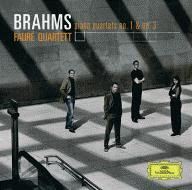Julian Kuerti leads Colorado Symphony Orchestra through delightful evening of Strauss, Mozart and Beethoven
 Principal CSO Horn player Michael Thornton performed Mozart's Horn Concerto No. 4
Principal CSO Horn player Michael Thornton performed Mozart's Horn Concerto No. 4
With a guest conductor on the podium and a soloist performing a concerto it's difficult to determine which was being showcased. Julian Kuerti (pictured) is the assistant conductor for the Boston Symphony Orchestra under James Levine and comes to Colorado with a huge list of recent accolades and accomplishment. Michael Thornton has been the principal horn player for Colorado Symphony Orchestra since 1997 with an equally impressive career. Both gave excellent performances!
The concert started with Richard Strauss Don Juan opus 20, a tone poem. Wasting no time with pleasantries, a quick bow to the audience, up to the podium and Bang! the piece took off. Kuerti's enthusiastic start included attention to each element of the orchestra as the piece unfolds. Using a variety of gestures, he swept over each section communicating the subtleties he wanted from the music, building the orchestra to a thunderous blast and then immediately down for the a delicate oboe melody. Kuerti is romantically passionate in his conducting, a marvelous match for the romantic music of Strauss.
The Mozart Horn concert was next. Michael Thornton masterful command of the instrument brought the beautifully rich tones of the horn wafting effortlessly through the hall. Kuerti's command of the orchestra kept the levels in check to ensure the orchestra was perfectly matched to the soloist, bringing the orchestra out then folding them back underneath to highlight Thornton's playing. The cadenza by Michael Thornton in the first movement was flawless.
The second movement gave Thornton the chance to show his mastery of the instrument. The sparkling melody is at the heart of the movement. Thornton's control of the instrument playing both in the high and low registers was amazing, allowing crystal clarity in the bright high notes and yet, the same clarity and command with the low notes, particularly at the very end of the movement when horn players typically struggle to keep the notes from sounding muddy. Thornton was brilliant!
The final movement was fast paced. Yet, even with the rapid notes, Thornton displayed ultimate control even when the rapid succession was in a light, quiet passage. Thornton opted to play the entire piece with the hand in the bell, as is period appropriate. However, this was done in Mozart's time because the natural horn was not able to play all the notes in tune without the use of the hand. Modern horns do not have this problem. I would like to have heard the concerto with the horn played open, giving the rich clarity of the horn a more brassy color. Playing Mozart with an open horn is obviously a preference, and one Michael Thornton doesn't agree with. In my opinion the Mozart was nice, but lacked the edgy sparkle in performance it could have had in the hands of such a master of the instrument.
The final piece of the program was Beethoven's Fourth Symphony. This piece is not only of the more popular of his symphonies which is a shame as it is a brilliant work, inventive, fun and complex in the way in moves. Kuerti opened the 1st movement with all in rich subtle beginnings, melding them together to highlight the various motives that comprise the rest of the symphony. Softly and slowly Kuerti pulled the elements together and then... as if shot from a cannon, the frolic begins. Bouncing atop the podium, frantically waving his arms like a three year old on Christmas day, Kuerti was obviously enjoying the music - and that passion came through in a delightful performance.
Moving into the second movement, Kuerti kept the pulse at an even keel, but fluctuated the dynamic and textures to give music as sense of rubato, a feeling of passion as Beethoven begins to explore romantic music. The third movement is an exercise in layered elements. Here Kuerti played the master weaver, sliding each element into play, allowing it a chance to shine - then folding it underneath the next element as it come to the fore. None of these element coming in with any sense of regularity in terms of the meter of the piece. It was if there were dozens of dancers on the stage each dancing to their own music and Kuerti was choreographing the entire dance on the fly.
The fourth movement is rather like a fast ride in a sports car. Kuerti kept the pace at record speed practically careening over the edge of each curve in the road. Yet, the Colorado Symphony Orchestra musicians kept pace with him bouncing through the final movement thoroughly enjoying the ride. The audience did too, rapidly coming to their feet for a standing ovation. All this for a piece that isn't particularly popular in comparison with other Beethoven symphonies.
In the end I have to give top billing to Julian Kuerti for his command of the orchestra. There were moments in the Strauss when his conducting style didn't quite match the expectations of the orchestra resulting in a less than perfect performance. However, Kuerti's passion for Beethoven really set the stage on fire bringing the concert to a brilliant close. If Kuerti is one of the candidates to replace Jeffery Kahane next year, I think he is certainly a strong contender.

Comments